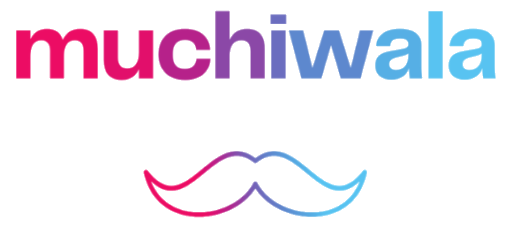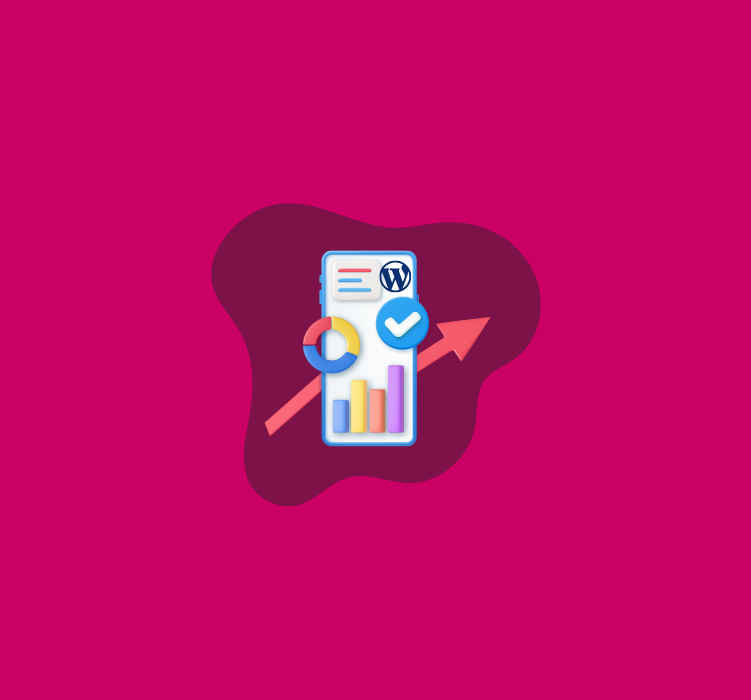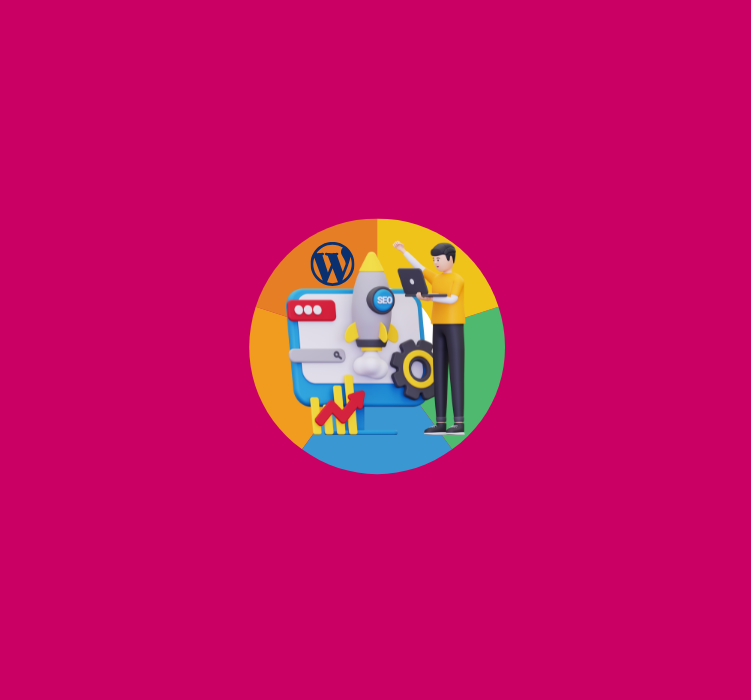SEO vs. Content Marketing: How WordPress Can Help You Master Both
Businesses often face a critical dilemma: should they prioritize driving traffic & focus on SEO vs. content marketing to invest in and build meaningful connections with their audience? While both are essential pillars of online success, they serve distinct yet interrelated purposes. In the digital marketing world, SEO and Content marketing are two sides of the same coin. While SEO (Search Engine Optimization) focuses on discovering your content, content marketing ensures that what you offer is valuable and engaging. To succeed online, you need both strategies to work hand in hand. Enter WordPress, the ultimate platform that empowers you to master both SEO and content marketing effortlessly. This blog will explore the difference between SEO vs. content marketing and how WordPress helps you excel in both.
SEO vs. Content Marketing: Understanding the difference

SEO – Search Engine Optimization
SEO is about improving your website’s visibility on search engines. It involves optimizing technical aspects like keywords, meta tags, site speed, backlinks, and user experience so search engines rank your site higher.
Focus:
- Search engine optimization
- Keywords and on-page elements
- Technical performance
Content Marketing
Content Marketing is about creating and distributing valuable content that attracts, engages, and converts your audience. High-quality blogs, videos, infographics, and social posts build trust and relationships with users.
Focus:
- Content creation and storytelling
- Audience engagement and education
- Brand authority
While SEO brings the audiences to your site, content marketing keeps them there and converts them into loyal followers or customers.
Why WordPress is the perfect tool for both
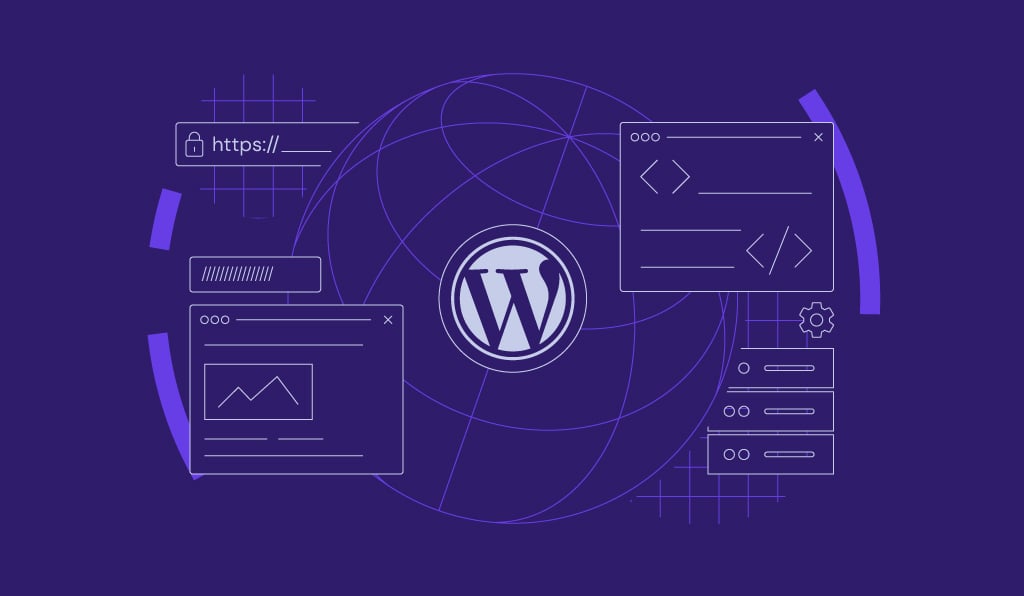
WordPress is more than just a blogging platform; it’s a complete Content Management System (CMS) that helps businesses, creators, and marketers align SEO with content marketing strategies. Here’s how we can find a difference between SEO vs. Content Marketing:
SEO made easy with Plugins
WordPress offers powerful SEO plugins like Yoast SEO and Rank Math that simplify optimization. These tools help you:
- Optimize meta titles, descriptions, and focus keywords
- Analyze content readability and SEO-friendliness
- Improve URL structure and internal linking
Even beginners can enhance their website’s search ranking with strong features.
Content Creation and Management
Content is king, and WordPress makes it easy to rule. Its user-friendly editor allows you to create blogs, landing pages, and media-rich posts without technical expertise. Features like:
- Block Editor: Customize layouts with text, images, videos, and CTAs
- Scheduling Posts: Plan content ahead of time to stay consistent
- Categories and Tags: Organize content for better navigation and SEO
With WordPress, content creation becomes smooth and strategic.
Mobile Optimization and Speed
SEO isn’t just about content; it’s also about user experience. WordPress offers responsive themes and performance plugins like WP Rocket and Autoptimize to improve site speed and mobile friendliness. Faster loading times and mobile optimization boost SEO rankings.
Seamless Content Distribution
WordPress integrates with social media tools and email marketing platforms, helping you share your content across channels. Plugins like Jetpack allow you to auto-share blogs to social media, driving traffic, and enhancing content marketing efforts.
Analytics for data-driven strategies
Track performance with tools like Google Analytics and built-in WordPress stats. By analyzing your SEO results and user behavior, you can refine your content strategy and deliver what your audience wants.
Master both SEO and content marketing with WordPress

To succeed in today’s competitive landscape, you need a perfect balance of SEO and content marketing. WordPress provides the tools, flexibility, and resources to bring both strategies together smoothly. Mastering both SEO vs. content marketing might seem daunting, but that’s where WordPress steps in as a game-changer.
- Use plugins for better SEO optimization
- Create engaging, value-driven content easily
- Improve site performance and user experience
- Distribute and track your content efficiently
With WordPress as your platform, you can drive traffic, keep users engaged, and grow your brand, all in one place.
Conclusion
SEO and content marketing aren’t rivals; they’re partners in building your online presence. WordPress empowers you to master both with its versatile tools and user-friendly interface. WordPress makes achieving your digital goals simple and effective whether you’re a blogger, business owner, or marketer.
The Future of WordPress: What’s New in 2025 and ahead?
As we step into 2025, WordPress continues to solidify its position as the world’s leading Content Management System (CMS), powering over 43% of all websites. But what lies ahead? Let’s explore the exciting advancements shaping the future of WordPress in 2025 and beyond.
WordPress, the powerhouse behind over 40% of the web, continues to evolve and shape the digital landscape with remarkable innovation. As we step into 2025, the platform is poised for a transformative leap, integrating cutting-edge technologies, user-centric enhancements, and forward-thinking solutions that cater to developers, businesses, and creators alike.
Looking ahead, WordPress isn’t just adapting—it’s leading the charge. From improved performance metrics that prioritize speed and scalability to a deeper focus on inclusivity with enhanced accessibility features, the platform is not just a tool but a canvas for the future of WordPress and digital expression. Whether you’re a seasoned developer or an aspiring entrepreneur, understanding the trajectory of WordPress will be key to staying competitive in the ever-evolving online ecosystem.
In this article, we’ll explore the latest updates, projected innovations, and the broader impact WordPress is set to have in 2025 and beyond. Get ready to dive into the trends, technologies, and transformations that are shaping the future of WordPress.
Future of WordPress: Strategies and Tips
Full Site Editing (FSE): A Smooth Experience
2025 marks the development of Full Site Editing, a game-changer for WordPress. FSE enables users to edit every part of their website – headers, footers, sidebars, and more – using a visual, block-based approach. Expect even more spontaneous features, enhanced templates, and pre-designed block patterns that simplify web design for non-technical users.
Moreover. Improvements in FSE are set to empower developers to create experiences by offering deeper integration with themes and plugins, reducing the need for custom coding.
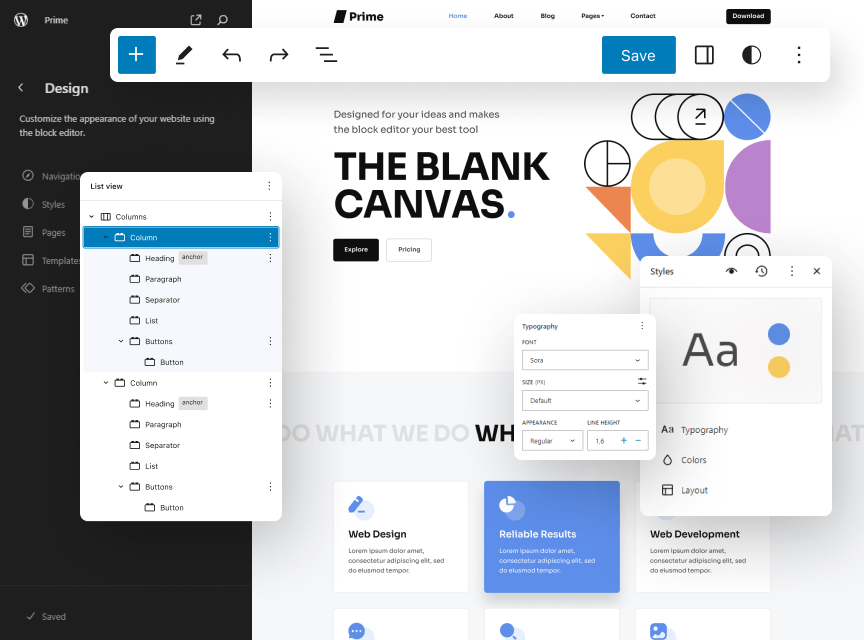
AI-Powered Enhancements
Artificial Intelligence is becoming a foundation of WordPress innovation. From AI-assisted content creation and editing tools to intelligent design recommendations, the CMS is balanced to make website management smarter and more efficient. Plugins influencing AI for SEO, personalized user experiences, and automated workflows will see a rise in 2025.
Expect WordPress to integrate AI tools that suggest optimized layouts, write SEO-friendly content, and even generate custom graphics within the dashboard for shaping the future of WordPress.

Headless WordPress: The Rise of Significant Architecture
The rise of headless CMS architecture is a significant trend for 2025. Headless WordPress allows developers to use WordPress as a backend while leveraging modern frontend frameworks for lightning-fast, dynamic user experiences.
This approach is perfect for businesses prioritizing performance, scalability, and mobile-first designs. As more APIs and developer tools become available, headless WordPress will become the standard for complex, enterprise-grade websites.
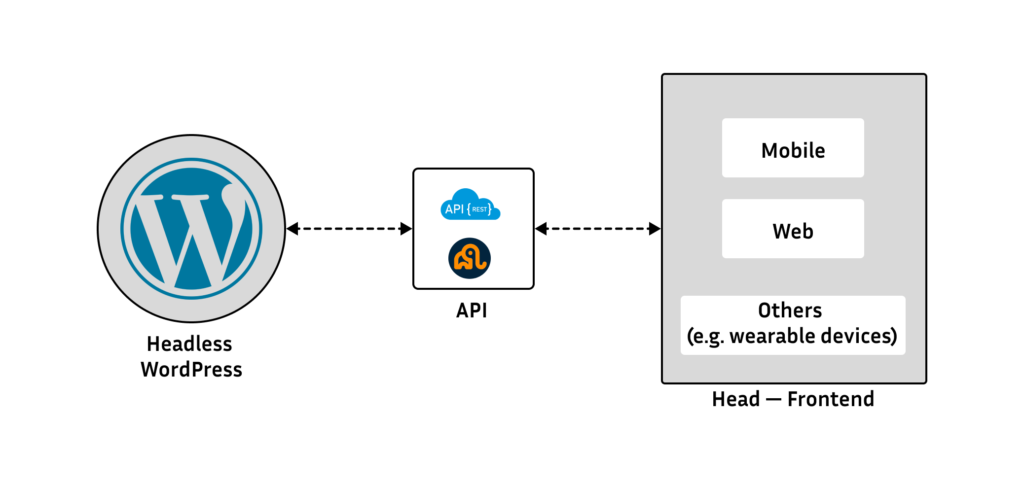
Enhanced Accessibility and Unifying
WordPress is committed to democratizing publishing, and 2025 will bring advancements in accessibility. Themes, plugins, and core features will focus on meeting Web Content Accessibility Guidelines (WCAG), ensuring websites are usable for everyone, including individuals with disabilities. Features like voice command integration and enhanced keyboard navigation will redefine how users interact with websites and will help shape the future of WordPress users all across the world.

Security and Performance Upgrades
As cyber threats evolve, WordPress is prioritizing security. Expect new core features like advanced authentication methods, real-time scanning, and automatic updates to keep websites secure. On the performance front, WordPress will push boundaries with faster loading times, improved image optimization, and better integration with modern hosting solutions.

Eco-friendly Web Practices
With sustainability becoming a global priority, WordPress is embracing eco-friendly web development. Developers are creating lightweight themes and plugins that consume less server power, reducing websites’ carbon footprint.

Final Thoughts
WordPress in 2025 is all about empowering users with spontaneous design tools, leveraging AI for smarter workflows, and embracing modern technologies like headless architecture. With a focus on accessibility, security, and sustainability, WordPress is not just keeping pace with the digital world but it’s leading the charge. The future of WordPress offers endless opportunities to create, innovate, and grow in the digital age. This blog has highlighted the most important and innovative change in the digital landscape of website development through WordPress.
WordPress SEO for E-commerce: How to Rank Your Online Store Higher
WordPress, a favorite platform for many e-commerce businesses, offers a powerful blend of flexibility and SEO tools to help you climb the search engine ranks. But mastering SEO for e-commerce requires more than just plugins—it’s about crafting strategies tailored to your store’s unique needs.
WordPress offers a powerful platform for optimizing your e-commerce store for search engines. Simply having an online store isn’t enough. Your store needs to rank high on Search Engine Results Pages (SERPs) to attract more customers and boost sales. WordPress, with its robust SEO capabilities, provides an excellent platform for e-commerce businesses. In this blog, we’ll explore actionable tips to optimize your WordPress e-commerce website for better rankings.
Tips on leveraging WordPress SEO for E-Commerce Website
Choose an SEO-Optimized E-commerce Theme
The foundation of your WordPress SEO for e-commerce strategy begins with your theme. Choose a lightweight, SEO-friendly e-commerce theme Astra, OceanWP, or GeneratePress. These themes are designed for faster loading times, mobile responsiveness, and clean code, which search engines look for.
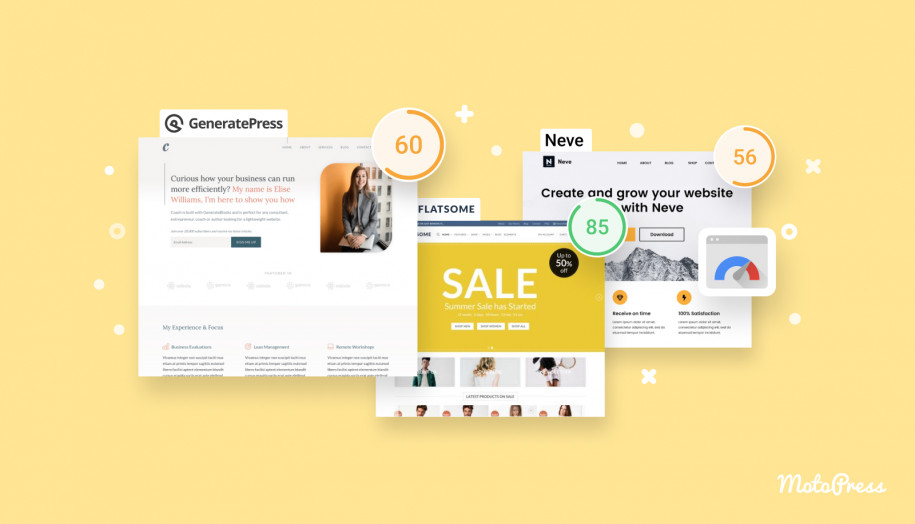
Install a Robust SEO Plugin
SEO plugins simplify optimization. Yoast SEO, All in One SEO, or Rank Math are excellent options for WordPress. They provide insights into keyword optimization, meta descriptions, and on-page SEO factors. SEO for e-commerce, with these tools, you can ensure each product page is primed for search engines.

Optimize Product Pages for keywords
Each product page should target specific keywords relevant to your offerings. Follow these steps to ensure keyword optimization:
- Use long-tail keywords like “exclusive diamond rings for men”
- Add keywords naturally to the title, meta description, headers, and product description
- Include alt text with keywords for all product images
Pro tip: Use tools like Google Keyword Planner or SEMrush to discover high-traffic, low-competition keywords.
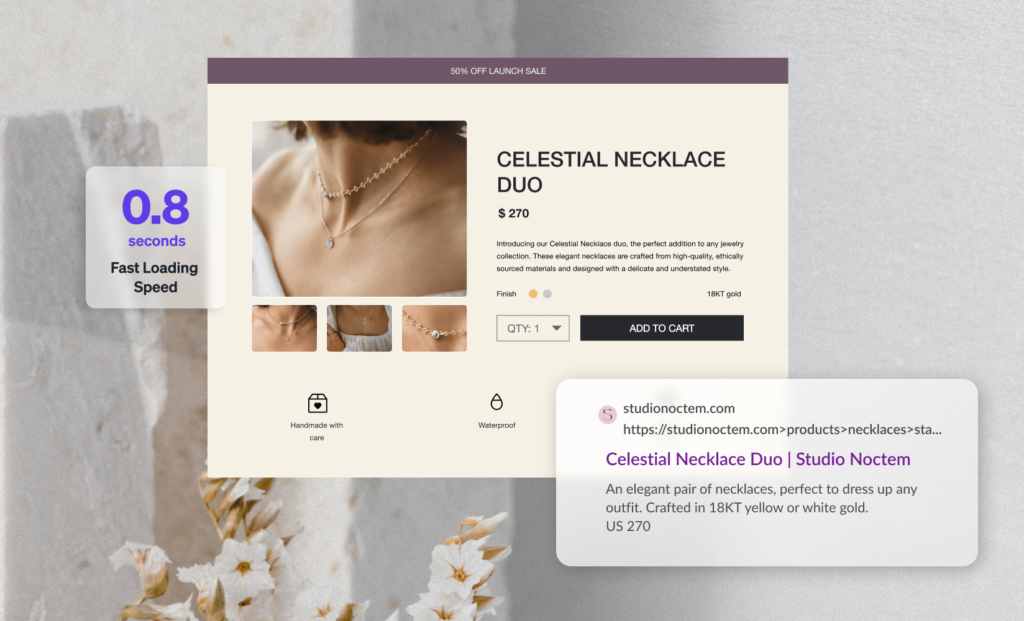
Enhance Website Speed and Performance
Search engines prioritize fast-loading websites, improve your WordPress SEO for e-commerce site speed by:
- Compressing images using plugins like Smush or Imagify
- Utilizing caching plugins such as WP Rocket or W3 Total Cache
- Choosing reliable hosting providers optimized for WordPress, like SiteGround or Kinsta
A fast website not only improves rankings but also keeps your customers engaged.
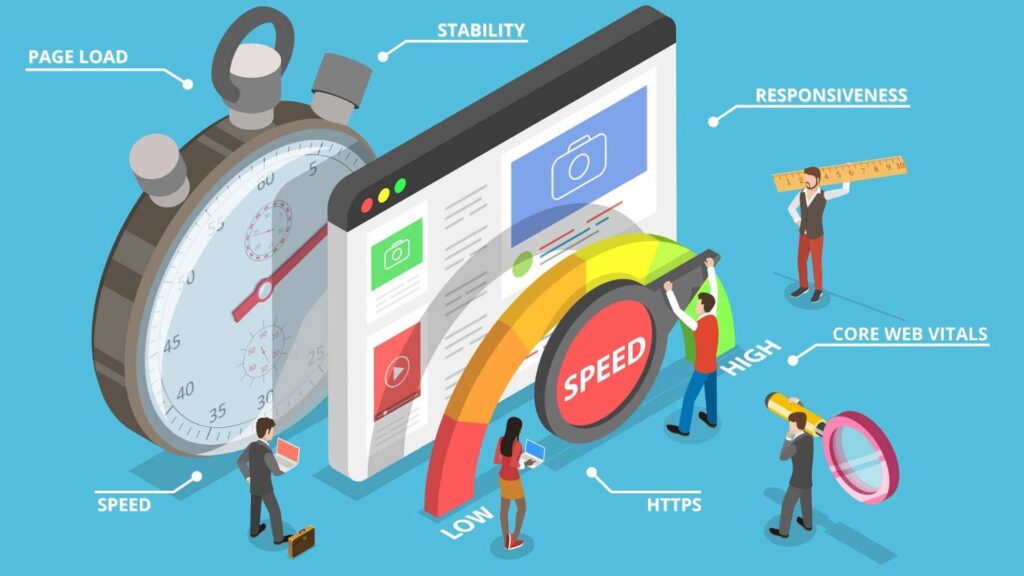
Make your website mobile-friendly
With mobile commerce on the rise, having a mobile-responsive design is stable. Use tools like Google’s Mobile-Friendly Test to check your site’s responsiveness and optimize it for smaller screens. Most modern WordPress themes and page builders, such as Elementor or Divi, come with built-in mobile design features and help in SEO for e-commerce ranking.
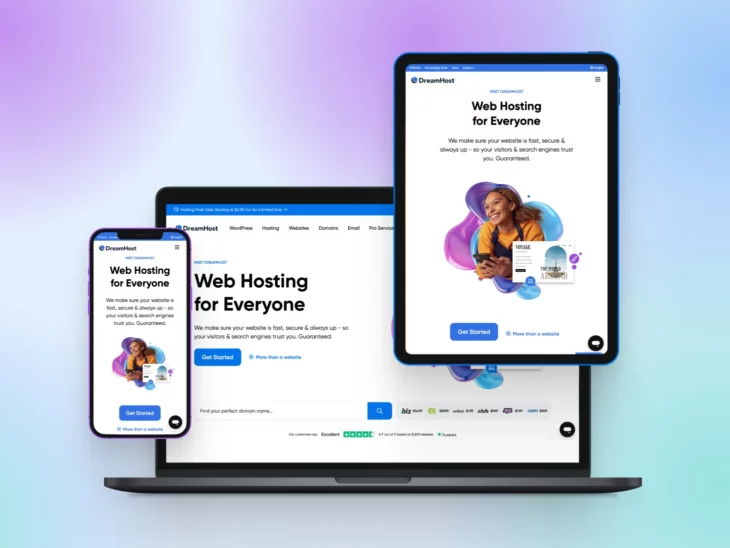
Build Internal Links Strategically
Internal linking helps search engines understand your site structure and encourages visitors to explore more products. Link-related products, blog posts, and category pages to create a smooth user experience. Use anchor texts that incorporate relevant keywords and phrases to enhance SEO value.
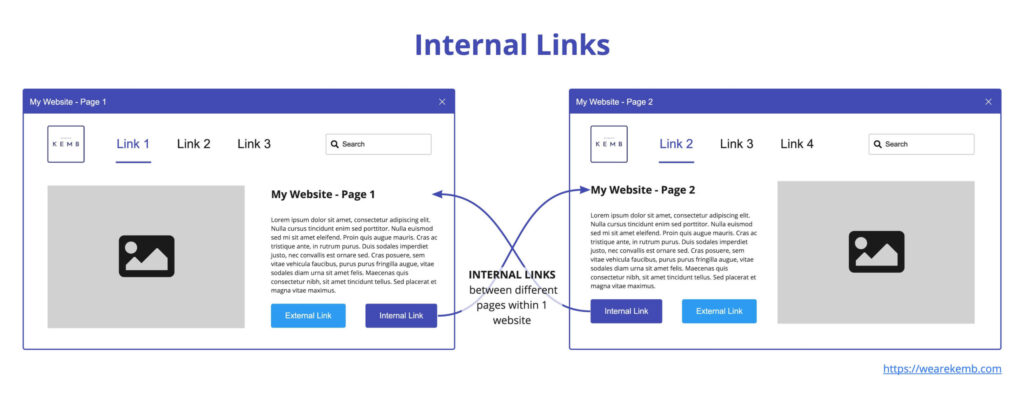
Leverage Product Reviews for SEO
Customer reviews not only build trust but also enhance SEO—positive reviews act as user-generated content, filled with keywords naturally embedded by your customers. Enable preview sections on your product pages and integrate schema markup to display star ratings in search results.
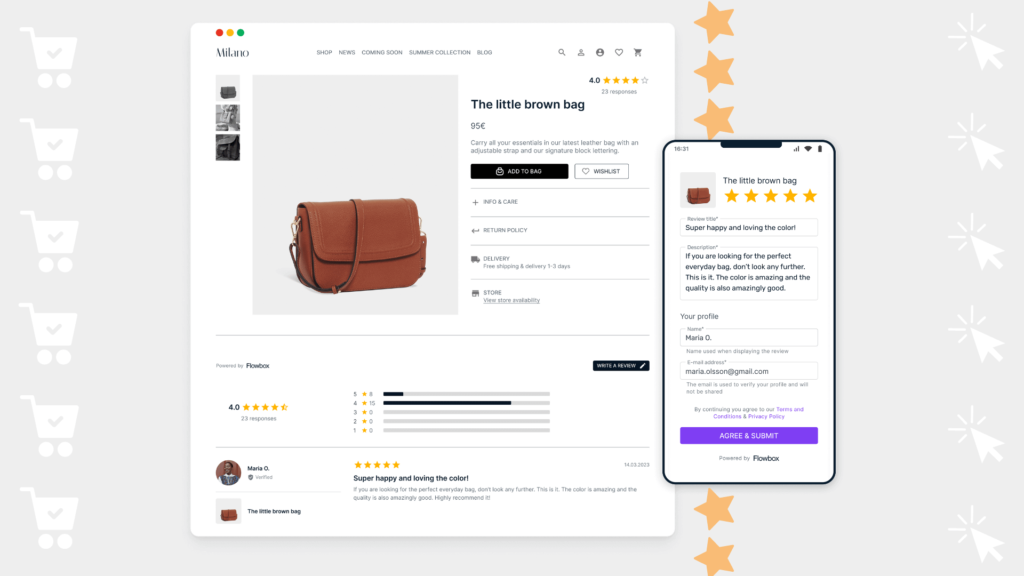
Implement Structured data for rich snippets
Structured data markup helps search engines display additional details, like product prices, availability, and reviews, directly in search results. Plugins like Schema Pro or Rank Math allow you to add structured data without any coding expertise.

Create High-Quality Blog Content
A blog is an excellent way to drive organic traffic to your store. Write content around your niche, such as buying guides, product comparisons, or industry trends. Use internal links to guide readers from your blog to product pages, boosting your chances of conversions.

Monitor and improve with Analytics
SEO is an ongoing process. Use tools like Google Analytics and Search Console to track your site’s performance. Identify high-performing pages and optimize underperforming ones by modifying keywords, improving load speed, or updating content.

Conclusion
This blog is designed to be actionable and engaging, providing e-commerce businesses with a roadmap to WordPress SEO for e-commerce website success. Optimizing your e-commerce store on WordPress requires a strategic and consistent approach. By leveraging the platform’s powerful SEO features and focusing on user experience, you can boost your rankings and drive more traffic to your store. Start implementing these tips today and watch your online store grow to greater heights.
Common WordPress Mistakes to Avoid for Your Website
WordPress is one of the most popular platforms for building websites, with its user-friendly interface and endless customization options. Whether you’re a beginner or a pro, avoiding common WordPress mistakes can mean the difference between a flawless site and one riddled with issues. However, even with its ease of use, it’s easy to fall into traps that can hurt your website’s performance, security, and user experience. Building a website with WordPress can be an exciting journey.
With its user-friendly interface and countless customization options, it empowers millions of users to create anything from personal blogs to complex e-commerce platforms. However, beneath its simplicity lies the potential for costly WordPress mistakes that can hinder your website’s performance, security, and user experience.
In this guide, we’ll delve into the most common WordPress mistakes, explain their impact, and provide actionable tips to help you steer clear of these missteps. By understanding these challenges, you can create a robust, secure, and engaging website that stands out in today’s competitive online landscape. Let’s explore the WordPress mistakes you should avoid and ensure your website journey is smooth and rewarding!
Common WordPress mistakes you need to avoid
Using default themes and plugins
When you first set up your WordPress site, it’s tempting to stick with the default theme or install random plugins without much thought. While these options may seem convenient, they limit your website’s potential. Default themes often lack the customization options and features your site needs. Similarly, many plugins can slow down your site or create security weaknesses.
Ignore Regular Backups
One of the website owners’ biggest mistakes is not backing up their WordPress site regularly. Whether due to a server crash, hack, or simple user error, data loss can happen, and if you don’t have a backup, you could lose everything.
Not updating WordPress, Themes, and Plugins
WordPress regularly releases updates to improve functionality, fix bugs, and patch security weaknesses. Failing to update WordPress core, themes, and plugins is like leaving a door open for hackers to stroll in.
Neglecting Mobile Optimization
In today’s digital world, more than half of web traffic comes from mobile devices. A website that doesn’t offer a smooth mobile experience can drive visitors away and hurt your search engine rankings. Test your website on different devices and screen resolutions to ensure it loads quickly and looks great on smartphones and tablets.
Poor Site Speed
Slow websites lead to high bounce rates, poor user experience, and a negative impact on SEO rankings. Too many unoptimized images, heavy plugins, or poor hosting can make your site drag its feet.
Overlooking SEO basics
You can have a fantastic website, but if it’s not optimized for search engines, it won’t get the traffic it deserves. Basic WordPress mistakes, such as not using proper headings, missing meta descriptions, or ignoring alt text for images, can prevent your site from ranking well. Use SEO plugins like Yoast SEO or Rank Math to help you optimize each page and post for search engines.
Lack of Security Measures
WordPress sites are prime targets for hackers due to their popularity. If you don’t take proper security measures, you risk your website being compromised, which can lead to loss of data or reputation.
Conclusion
Building a successful WordPress website takes more than just setting up a theme and writing content. By avoiding these common WordPress mistakes – using default themes, neglecting backups, ignoring updates, and overlooking SEO and security – you can ensure your WordPress site runs smoothly, is secure, and provides the best user experience. Regularly evaluate your website, stay updated with the best practices, and your WordPress site will be set for long-term success.
How to Optimize Your WordPress Website for Mobile
In today’s digital landscape, optimizing your WordPress website for mobile has become more critical than ever. With mobile devices accounting for a significant portion of global web traffic, ensuring your site is mobile-friendly isn’t just a luxury—it’s a necessity. A poorly optimized site can lead to slow loading times, poor user experiences, and a loss of potential customers.
With mobile users’ growing superiority in 2024, optimizing your WordPress website for mobile devices is no longer optional; it’s essential. A mobile-friendly website improves user experience, boosts SEO rankings, and increases engagement. Here’s a detailed guide to help you optimize your WordPress website for mobile audiences. From improving page load speeds to crafting responsive designs, optimizing for mobile goes beyond just shrinking desktop layouts.
In this guide, we’ll also explore actionable steps to make your WordPress site visually appealing, fast, and user-friendly on any device. Let’s dive into the essentials of creating a seamless mobile experience.
Tips to optimize your WordPress website for Mobile
Choose a Responsive Theme
A responsive theme automatically adjusts your website’s layout based on the device’s screen size. In 2024, modern WordPress themes like Astra, GeneratePress, and Neve are built with responsiveness in mind.
- Check the theme demo on multiple devices
- Use Google’s mobile-friendly test to ensure it meets mobile standards
Leverage Mobile-friendly plugins
Plugins can enhance mobile usability. Consider adding these tools:
- WP Mobile menu: Simplifies navigation for smaller screens
- Accelerated Mobile Pages (AMP) for WP: Accelerates page load times on mobile devices
- Smush: Compresses images without sacrificing quality, making your site load faster
Optimize for Speed
Mobile users are impatient, slow websites lead to higher bounce rates. Optimize your website’s speed using:
- Caching: Use plugins like WP Rocket or W3 Total Cache
- Content Delivery Networks (CDNs): Services like Cloudflare distribute your content globally for faster loading times
- Minifying CSS and JavaScript: Reduce file sizes using plugins like Autoptimize
Improve Mobile Navigation
Mobile users expect seamless navigation. Simplify your menus and consider these tips:
- Use a hamburger menu to save space
- Limit menu items to essential links
- Ensure clickable elements are large enough for touch interaction
Optimize Images and Media
Large images and videos slow down your WordPress website for mobile devices. Optimize the images and videos by:
- Using responsive images and video sizes through WordPress’s built-in feature
- Compressing images with tools like TinyPNG or ShortPixel
- Implementing lazy loading so images load only when visible on the screen
Enable Mobile-friendly forms
Forms are critical for capturing leads and engagement but can be tricky on mobile. Use plugins like WPForms or Gravity Forms, which offer mobile-responsive designs and input fields.
Test your Website regularly
Optimization isn’t a one-time task. Use these tools in WordPress website for mobile optimization:
- Google Search Console to identify mobile usability issues
- BrowserStack to preview your site on different devices
- Pingdom to check load times
Optimize Fonts and Buttons
Readable fonts and accessible buttons enhance user experience
- Use font sizes of at least 16px for body text
- Leave enough spacing between buttons to avoid accidental clicks
Add mobile-specific features
Incorporate mobile-first features to engage users effectively:
- One-click call buttons for easy contact
- Mobile-friendly social sharing buttons
- Sticky CTAs to guide users through the buying process
Keep it simple
Minimalistic design works best on mobile Avoid crowded layouts, excessive pop-ups, and interrupting ads that frustrate users, and lead them to exit your website without any action taken.
Final Thoughts
Optimizing your WordPress website for mobile in 2024 is about prioritizing speed, usability, and accessibility. With the right tools, techniques, and consistent monitoring, you can create a mobile experience that delights users and drives results. By following these strategies, you’ll not only enhance the mobile experience but also boost your SEO performance. Start implementing these tips today to ensure your site is ready for the demands of the mobile-first web era.
How to Leverage WordPress Themes
Creating a visually appealing, functional, and user-friendly website can be daunting, but WordPress themes make it much easier. These ready-made templates offer a starting point, allowing users to design websites without diving deep into coding. In this guide, we’ll explore how to leverage WordPress themes to build an outstanding website effectively.
Leverage WordPress Themes for a Stunning Website
Choose the Right Theme
Your website’s theme is its foundation, influencing its appearance and user experience. Choosing the right theme is critical and starts with understanding your goals.
- Define Your Purpose:
Begin by identifying the type of website you want to create. WordPress Themes are often designed with specific niches in mind, making it easier to find one tailored to your needs.
- Browse the WordPress database:
The WordPress database offers thousands of themes, both free and premium, catering to various industries and styles.
- Focus on Responsiveness:
A responsive theme adjusts seamlessly across devices, providing a smooth browsing experience whether users are on a desktop, tablet, or smartphone.
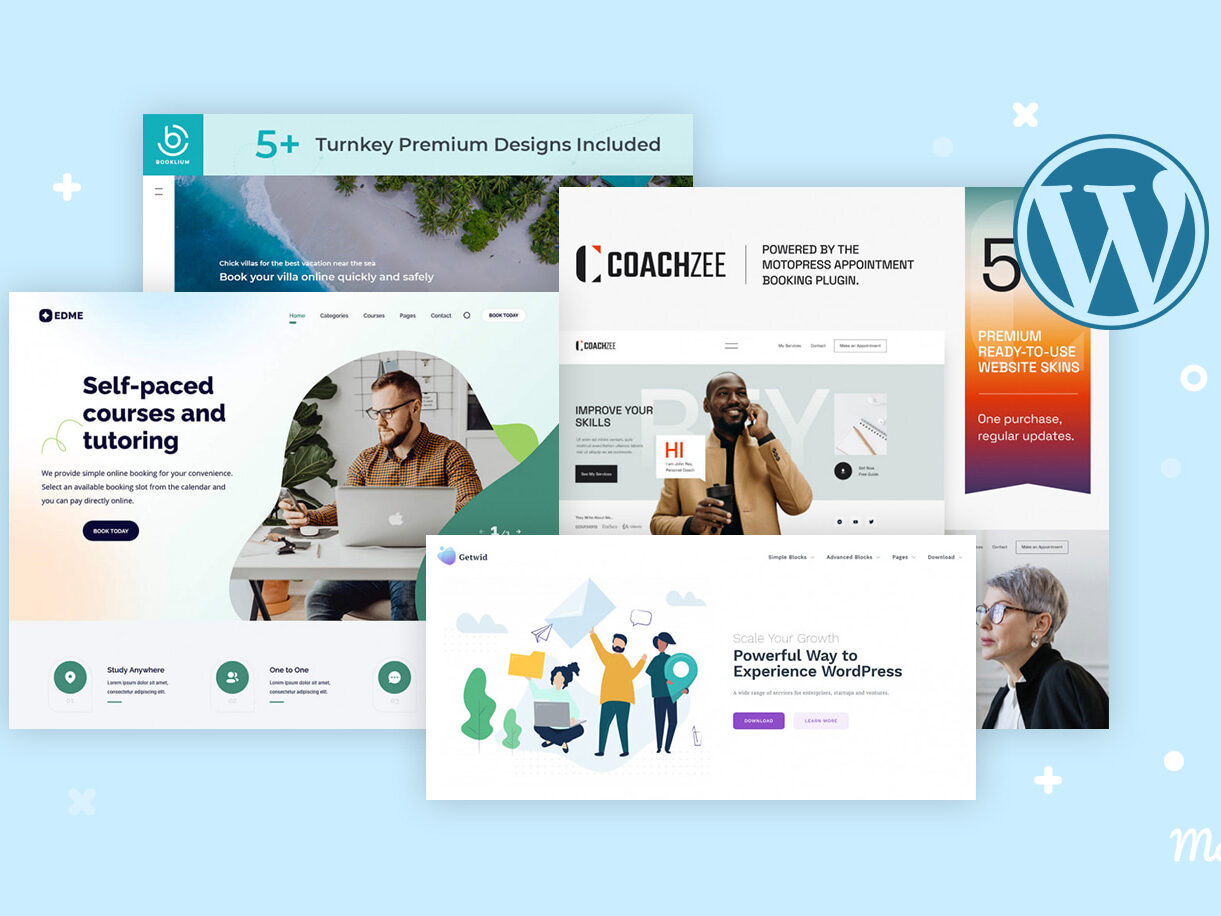
Customize for Your Brand
Installing a theme is just the first step. Customization ensures your website reflects your brand identity and stands out from others using the same theme.
- Change the Color Scheme:
Most themes allow you to modify the color palette. Match it to your brand’s colors to create consistency across your website and marketing materials.
- Add Your Logo and Tagline:
Upload your logo and craft a tagline that communicates your brand message. These small elements can make a big difference in personalizing your site.
- Adjust Fonts:
Typography plays a significant role in readability and strong context. Many WordPress themes let you choose from a variety of fonts to suit your style.
- Modify Layouts:
Use the Customizer tool or page builder (if included) to reorganize elements on your site. Highlight key content, such as CTAs (Calls to Action), services, or product showcases, where they are most likely to grab attention.
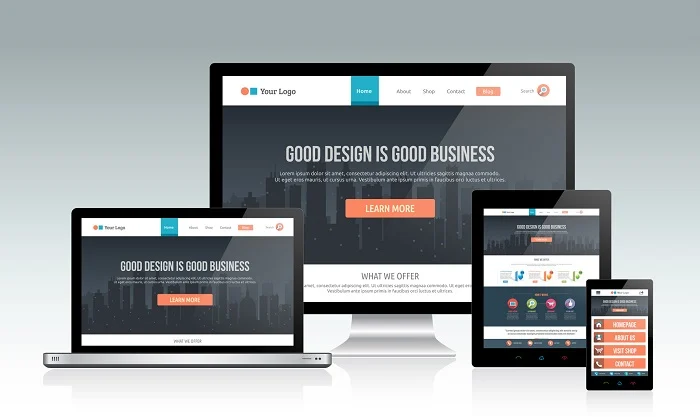
Utilize Theme Features
Modern WordPress themes come packed with features that enhance both functionality and design. Leveraging the themes can save you time and effort.
- Pre-Built Layouts:
Many themes offer pre-designed page templates for blogs, portfolios, or landing pages. These layouts can be customized with your content, reducing the time needed for design.
- Widgets and Sidebars:
Widgets allow you to add dynamic elements such as calendars, social media feeds, and recent posts to your site. Use these to enhance navigation and user engagement.
- Plugin Compatibility:
Themes often integrate seamlessly with essential plugins like WooCommerce for e-commerce, Yoast SEO for optimization, and Elementor for advanced customization.
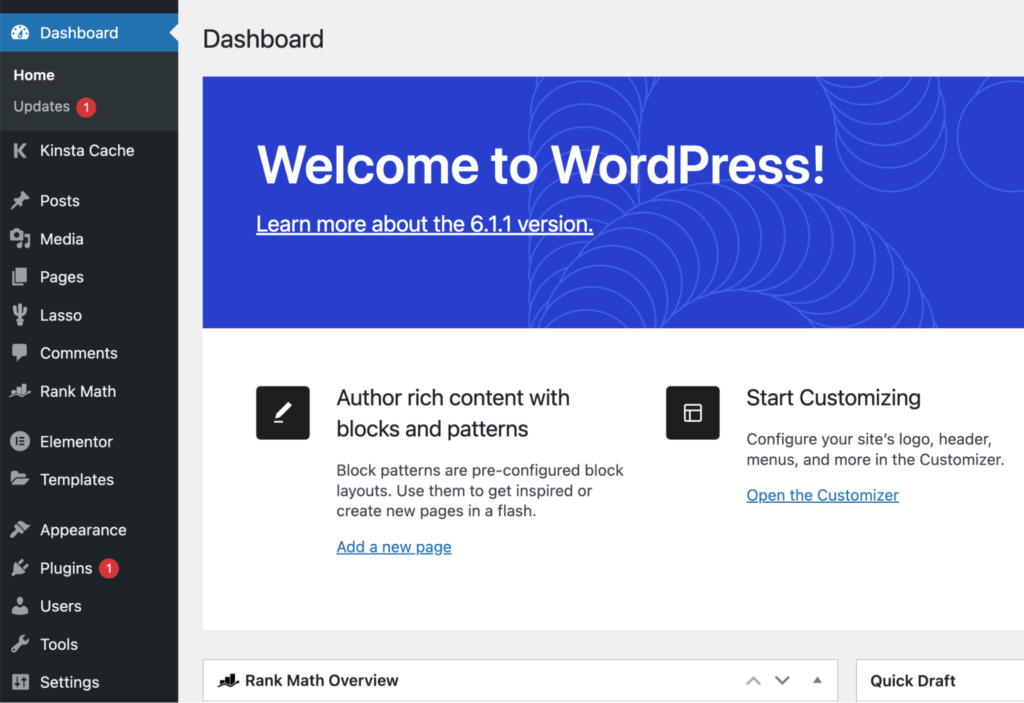
Optimize for Performance
Even the most beautiful website can fail to impress if it loads slowly. Optimize your theme to deliver a fast, seamless experience for visitors.
- Compress Images:
High-resolution images can slow down your website. Use tools like Smush or TinyPNG to compress them without compromising quality.
- Minimize Scripts:
Avoid themes overloaded with excessive animations or unnecessary features. These can add excessive weight to your site and reduce speed.
- Choose Lightweight Themes:
WordPress Themes like Astra, GeneratePress, or Neve are designed for speed and performance. They offer a clean codebase and are optimized for fast loading.
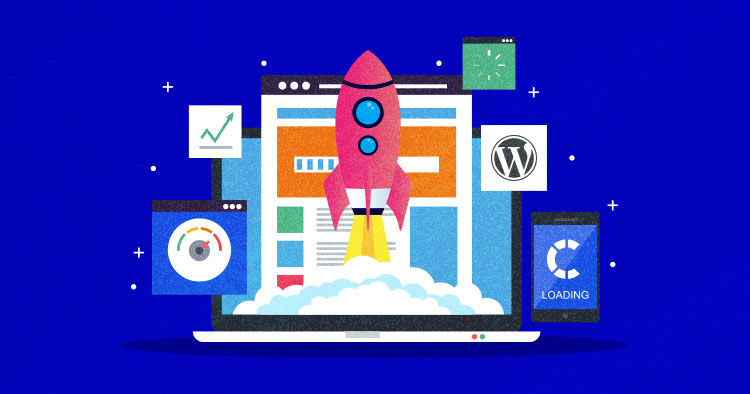
Keep It Updated
Themes require regular updates to stay compatible with the latest WordPress version, plugins, and security standards.
- Update Responsibly:
Always back up your site before updating your theme to prevent data loss in case of compatibility issues.
- Stay Secure:
Updating your theme helps patch vulnerabilities and ensures your site remains secure from potential threats.
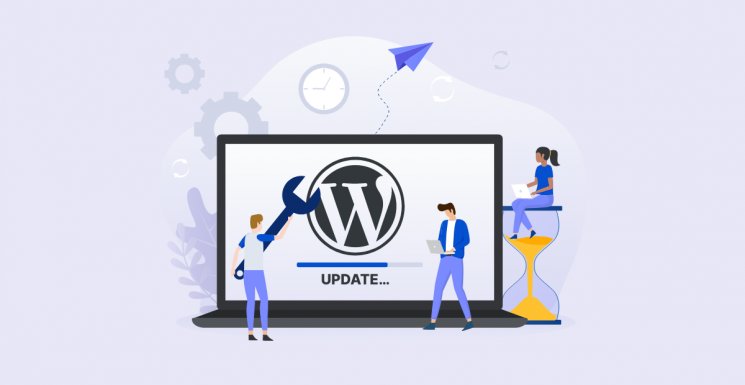
Seek Inspiration and Support
Building a unique website doesn’t mean you can’t take inspiration from others.
- Explore Examples:
Look at websites that use your chosen theme to see how others have customized it. This can give you ideas for design, layout, and features.
- Use Support Resources:
Most of the premium themes come with detailed documentation and dedicated support teams. Don’t hesitate to reach out for help if you face challenges.

Conclusion
WordPress themes are a game-changer for website creation, offering a blend of functionality, flexibility, and style. By carefully selecting a theme, customizing it for your brand, leveraging built-in features, and optimizing performance, you can craft a website that not only looks stunning but also delivers an exceptional user experience. Dive into the world of themes, experiment boldly, and create a website that truly represents your brand.
The Ultimate WordPress SEO Checklist: 10 Steps to Rank Higher
WordPress is one of the most SEO-friendly platforms, but achieving high rankings requires more than just installing a plugin. Mastering WordPress SEO is not a one-time effort but an ongoing process. This ultimate WordPress SEO checklist will build a foundation for better rankings and sustainable traffic. This checklist will guide you through the essential steps to optimize your WordPress website and climb the search engine rankings.
Start implementing these steps today, and watch your WordPress SEO checklist site soar to the top of search results! Boost your Website’s ranking with this ultimate WordPress SEO checklist! These 10 essential steps will guide you through optimizing every aspect of your site, from content to technical SEO, helping you achieve higher search engine rankings and drive more traffic.
10-Step WordPress SEO Checklist
Choose an SEO-Friendly Hosting Provider
The backbone of website performance is a reliable hosting provider. A host with fast servers ensures quick page loading, reducing bounce rates. Additionally, uptime and security features protect your site from potential downtimes and cyberattacks, both critical for SEO.
Install a WordPress SEO Plugin
WordPress SEO plugins like Yoast SEO and Rank Math are essential for managing your site’s SEO. These plugins help you easily set meta descriptions, generate XML sitemaps, and optimize content for readability and keyword focus. They also provide recommendations for improving the overall SEO score of your pages and posts, making them essential for both beginners and experienced users alike.
Use an SEO-Friendly Theme
Select a lightweight, mobile-responsive theme optimized for speed and performance. Themes stuffed with unnecessary code can hurt rankings.
Enable SEO-Friendly Permalinks
Customize your URL structure to include post names or keywords. A clean URL format improves readability and SEO value.
Conduct Thorough Keyword Research
Use tools like Google Keyword Planner, Ahrefs, or SEMrush to find relevant, low-competition keywords. To drive organic traffic, include these keywords sensibly in your titles, headings, and content.
Optimize Titles and Meta Descriptions
Title tags and meta descriptions appear in search results and affect click-through rates. Craft titles that include target keywords and grab attention. Meta descriptions should concisely summarize the page’s content and include a call to action.
Improve Site Speed
Google prioritizes fast-loading sites for better user experiences. Use caching plugins like WP Rocket or W3 Total Cache to enhance load times. Optimize images using tools like TinyPNG or Imagify, and consider a CDN (Content Delivery Network) to deliver content quickly worldwide.
Create and Submit an XML Sitemap
Sitemaps help search engines understand your site’s structure. Generate one with your SEO plugin and submit it to Google Search Console.
Secure Your Site with HTTPS
Google favors secure websites using HTTPS encryption. Migrating to HTTPS involves obtaining an SSL certificate, often provided by hosting providers. Secure sites are not only trustworthy for users but also necessary for higher rankings.
Regularly Update Content
Keep your site fresh by regularly updating older posts and adding new, high-quality content. This signals relevance to search engines.
Final thoughts
SEO success on WordPress requires consistent effort, smart strategies, and staying up-to-date with trends. Use this WordPress SEO checklist to climb search rankings and boost your online presence. A strategic mix of technical adjustments and quality content will help you climb the rankings and stay ahead of the competition. Regularly analyze performance using tools like Google Analytics and modify your strategies to gain more organic traffic. Boost your website’s visibility with our ultimate WordPress SEO checklist! Follow these 10 essential steps to rank higher and drive more traffic.
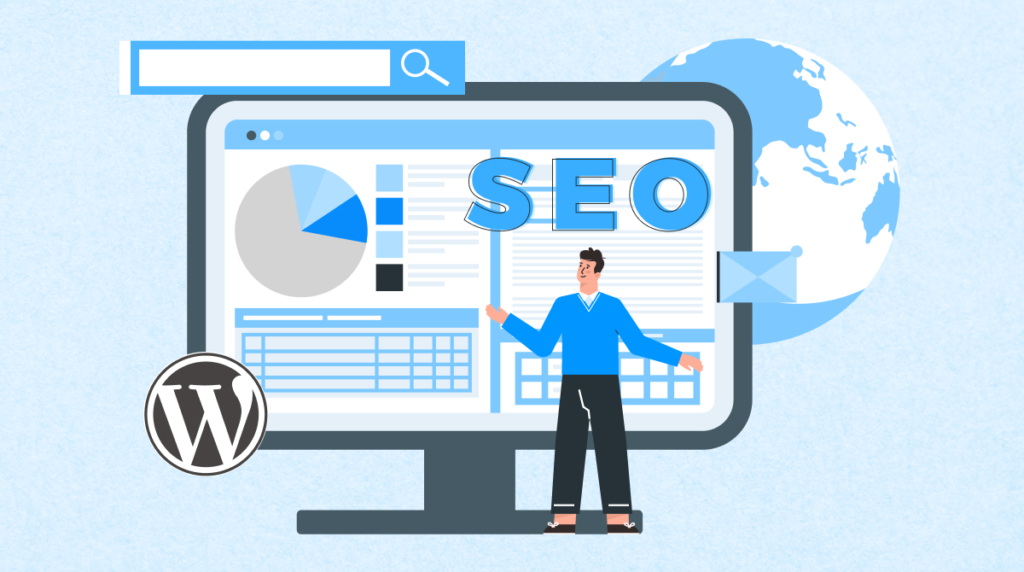
Top WordPress Plugins You Need
WordPress is an incredibly resourceful platform, powering over 40% of the web. However, the real magic happens when you enhance your site with WordPress plugins. Whether you’re looking to boost functionality, improve performance, or enhance user experience, there’s a plugin for everything. WordPress has a massive library of free and premium plugins to cater to diverse requirements.
Plugins are tools or software components that add specific features and functionality to a WordPress website. They allow users to extend and customize the capabilities of their websites without needing to write code. By leveraging WordPress plugins, you can tailor your site to meet your specific needs, whether for blogging, business, e-commerce, or portfolio purposes.
While this list highlights some of the best, always consider your site’s specific needs before installing WordPress plugins. Remember to keep them updated and avoid overloading your site with too many plugins. Here’s a list of the top WordPress plugins you need to elevate your website to the next level.
Top WordPress Plugins You Need: Power up your website
Yoast SEO – Boost your visibility
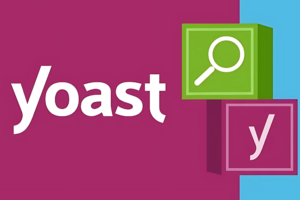
Yoast SEO is the go-to plugin for anyone serious about improving search engine rankings. It guides you in optimizing your content with real-time readability and feedback on keyword usage. Yoast has your SEO needs covered, from crafting the perfect meta description to managing XML sitemaps. It helps attract more traffic by ensuring your site meets the latest SEO standards.
Elementor – Create Stunning Pages with Ease
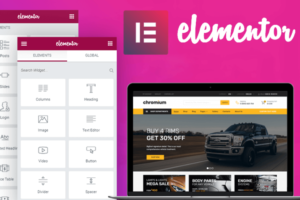
Elementor is a powerful drag-and-drop page builder that lets you design professional, responsive websites without any coding knowledge. It comes with pre-designed templates, making it perfect for beginners and advanced users alike. It empowers you to create visually stunning pages that captivate your audience.
WooCommerce – Power your online store
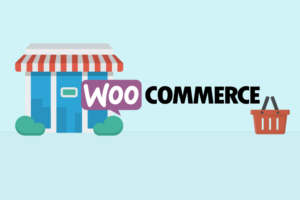
If you’re venturing into E-commerce, WooCommerce is a must. This plugin transforms your WordPress site into a fully functional online store. It supports multiple payment gateways, customizable product pages, and detailed analytics. It simplifies the process of setting up and running an online store.
WP Rocket – Speed up your site
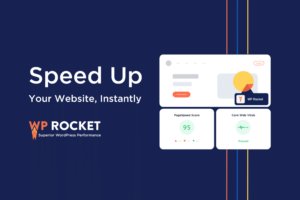
Site speed is crucial for user experience and SEO. WP Rocket is a premium caching plugin that optimizes your site’s loading time. It’s easy to set up and comes with features like lazy loading, database optimization, and minification of CSS and JavaScript. A faster website keeps visitors engaged and improves search rankings.
Akismet Anti-Spam – Keep spam at Bay

Spam comments can be annoying, especially for high-traffic blogs. Akismet automatically filters out spam, ensuring your comment section remains clean and engaging. It saves time and maintains your site’s credibility.
UpdraftPlus – Safeguard your data
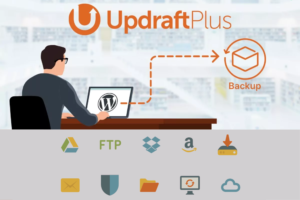
Regular backups are essential for any website. UpdraftPlus is a reliable plugin that backs up your site and lets you restore it with a click. You can schedule backups to cloud storage services like Google Drive or Dropbox. It protects your site from data loss in case of hacks or crashes.
MonsterInsights – Master Analysis
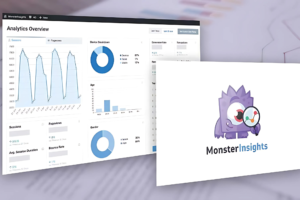
MonsterInsights brings Google Analytics to your WordPress dashboard. It provides insights into your audience’s behavior, helping you make data-driven decisions to improve your website. It is to understand your audience and optimize your site for better results.
WpForms – The Ultimate Form Builder
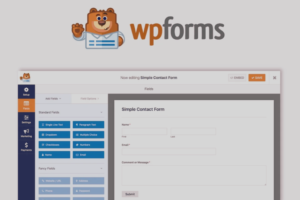
Every website needs a way for visitors to get in touch, and WPForms makes it incredibly easy. This beginner-friendly drag-and-drop form builder lets you create everything from contact forms to payment forms, surveys, and more.
Final Thoughts
Choose WordPress plugins that align with your site’s goals, and remember, less is more. Whether you’re focusing on SEO, design, eCommerce, or security, integrating the right plugins can transform your website into a powerful tool for success. Overloading your site with too many plugins can slow it down, so prioritize quality over quantity. Install these top WordPress plugins today, and watch your website reach new heights!

Why WordPress is the Ultimate SEO-Friendly Platform for Your Website
WordPress stands out as the ultimate choice when building a website that ranks well on search engines. Trusted by millions of websites worldwide, this platform combines flexibility, user-friendliness, and robust SEO features to help your website shine on search engine results pages (SERPs). WordPress is the ultimate SEO-friendly platform for your website in many ways.
WordPress – The Ultimate SEO-Friendly platform
Built-In SEO Features
This SEO-friendly platform comes with default features designed to enhance your website’s SEO. You can easily customize permalinks, optimize metadata, and structure your content with headings (H1, H2, H3, etc.), all essential for search engines to understand your site’s content.
SEO-Optimized Themes
WordPress offers thousands of SEO-optimized themes, ensuring your website looks great and performs well on search engines. These themes are lightweight, mobile-responsive, and coded to support faster loading times, which is a crucial ranking factor for your website.
Powerful SEO Plugins
The platform supports various SEO plugins like Yoast SEO and Rank Math, making optimization straightforward even for beginners. These plugins guide you through improving on-page SEO including adding keywords, optimizing meta descriptions, and enhancing readability.
Mobile-Friendly Designs
With Google’s mobile-first indexing, having a responsive website is non-negotiable. WordPress themes are designed to provide a smooth experience across devices, helping your site rank higher on mobile search engines.
Fast Loading Speed
Website speed is a critical SEO factor and WordPress ensures your pages load quickly. With options to use caching plugins like WP Rocket and content delivery networks (CDNs), you can significantly improve your site’s speed.
User-Friendly URL Structure
Search engines love clean and descriptive URLs. WordPress allows you to create simple, keyword-rich permalinks that improve your rankings and provide a better user experience.
Easy Integration with Analytics Tools
Tracking your site’s SEO performance is effortless with WordPress. It integrates smoothly with tools like Google Analytics and Google Search Console, helping you analyze traffic, keywords, and audience behavior.
Regular Updates and Security
This platform is constantly updated to meet evolving SEO standards and security requirements. This ensures your site remains manageable with search engine guidelines and stays secure from pitfalls.
Customizable for Advanced SEO
For advanced users, this platform offers flexibility to improve your site’s code, create custom robots.txt files, and implement schema markup. These capabilities make it ideal for anyone looking to push their SEO efforts to the next level.
Why WordPress?
WordPress’s extensive features, from SEO plugins to responsive themes and customizable options, make it the ultimate platform for creating websites that rank. Whether you’re a beginner or a seasoned marketer, this platform empowers you to optimize your site effortlessly and reach your target audience. Leap with WordPress and watch your website climb the search rankings to great heights!

Top 10 Tools for Video Creation
In today’s digital landscape, video content reigns supreme as a powerful medium for storytelling, marketing, and education. Whether you’re a professional filmmaker, a marketing enthusiast, or simply someone exploring creative avenues, having the right tools can make all the difference. With advancements in technology, video creation has become more accessible, offering a knowledge of software and platforms tailored to various needs and skill levels.
This guide dives into the top 10 tools for video creation, highlighting their unique features and capabilities. From beginner-friendly apps to professional-grade software, these tools empower creators to produce visually stunning and engaging content.
Top 10 Video Creation Tools
Adobe Premiere Pro
Features:
- Professional video editing with a wide range of tools and effects.
- Advanced color grading and audio editing capabilities.
- Integration with other Adobe Creative Cloud apps.
- Support for multiple file formats and high-resolution video.
Pros:
- Comprehensive set of professional editing tools.
- Seamless integration with Adobe Creative Cloud suite.
- Regular updates with new features and improvements.
- Extensive community support and tutorials.
Pricing:
- Single App: $20.99/month.
- Creative Cloud All Apps: $54.99/month.
Final Cut Pro
Features:
- Professional video editing software for macOS.
- Magnetic timeline and advanced editing tools.
- Support for high-resolution video and HDR.
- Integrated media organization and editing features.
Pros:
- Intuitive user interface optimized for macOS.
- Powerful editing tools with real-time performance.
- Advanced color correction and effects.
- One-time purchase with no subscription fees.
Pricing:
- One-Time Purchase: $299.99.
DaVinci Resolve
Features:
- Professional video editing, color correction, and audio post-production.
- Advanced tools for editing, color grading, and VFX.
- Collaboration features for team projects.
- Support for 4K and higher resolution video.
Pros:
- Comprehensive suite of tools for video editing and color grading.
- Free version available with robust features.
- Professional-grade features in the paid version.
- Strong support for collaborative projects.
Pricing:
- Free Version: Available.
- Studio Version: $295 (one-time purchase).
iMovie
Features:
- User-friendly video editing software for macOS and iOS.
- Pre-built templates and themes for quick video creation.
- Basic editing tools with an easy-to-use interface.
- Integration with iCloud for project syncing.
Pros:
- Simple and intuitive interface ideal for beginners.
- Free with macOS and iOS devices.
- Quick and easy video creation with templates.
- Seamless integration with Apple ecosystem.
Pricing:
- Free: Included with macOS and iOS.
Filmora
Features:
- Easy-to-use video editing software with a range of effects and transitions.
- Built-in templates and music tracks for quick video creation.
- Support for high-resolution video and 4K.
- User-friendly interface with drag-and-drop functionality.
Pros:
- Intuitive and beginner-friendly with a low learning curve.
- Affordable pricing with a range of features.
- Regular updates with new features and effects.
- Good balance of simplicity and functionality.
Pricing:
- Monthly Plan: $19.99/month.
- Yearly Plan: $49.99/year.
- Lifetime Plan: $79.99 (one-time purchase).
Camtasia
Features:
- Screen recording and video editing software for creating tutorials and demos.
- Built-in video editing tools with drag-and-drop interface.
- Support for annotations, effects, and transitions.
- Integration with PowerPoint for capturing presentations.
Pros:
- Ideal for creating instructional and educational videos.
- Easy-to-use with powerful screen recording features.
- Built-in library of effects and assets.
- Comprehensive editing tools for polished videos.
Pricing:
- One-Time Purchase: $299.99.
Biteable
Features:
- Online video creation platform with pre-built templates.
- Easy drag-and-drop video editor for quick creation.
- Library of stock footage, animations, and music.
- Customizable templates for various use cases.
Pros:
- Quick and easy video creation with ready-to-use templates.
- No software installation required; cloud-based platform.
- Affordable pricing with access to stock assets.
- User-friendly with drag-and-drop functionality.
Pricing:
- Free Plan: Limited features and watermark.
- Starter Plan: $19/month.
- Pro Plan: $49/month.
- Team Plan: $99/month.
Adobe After Effects
Features:
- Advanced tool for motion graphics and visual effects.
- Support for creating complex animations and effects.
- Integration with Adobe Premiere Pro and other Adobe apps.
- Extensive library of plugins and scripts.
Pros:
- Industry-standard for motion graphics and VFX.
- Highly customizable with extensive plugin support.
- Seamless integration with Adobe Creative Cloud suite.
- Advanced capabilities for creating high-quality animations.
Pricing:
- Single App: $20.99/month.
- Creative Cloud All Apps: $54.99/month.
Powtoon
Features:
- Online tool for creating animated videos and presentations.
- Drag-and-drop interface with pre-built templates and characters.
- Customizable animations and text options.
- Cloud-based with easy sharing and collaboration.
Pros:
- Simple and fun way to create animated videos.
- Extensive library of templates and assets.
- No advanced video editing skills are required.
- Cloud-based with easy sharing options.
Pricing:
- Free Plan: Limited features and watermark.
- Pro Plan: $19/month.
- Business Plan: $59/month.
- Enterprise Plan: Custom pricing.
Animoto
Features:
- Online video creation tool with easy drag-and-drop functionality.
- Pre-built video templates and music tracks.
- Customizable text and video clips.
- Cloud-based with sharing and publishing options.
Pros:
- Quick and easy video creation with pre-designed templates.
- User-friendly with no advanced video editing skills needed.
- Includes access to stock footage and music.
- Suitable for creating promotional and social media videos.
Pricing:
- Basic Plan: $8/month.
- Professional Plan: $33/month.
- Team Plan: $49/month.
